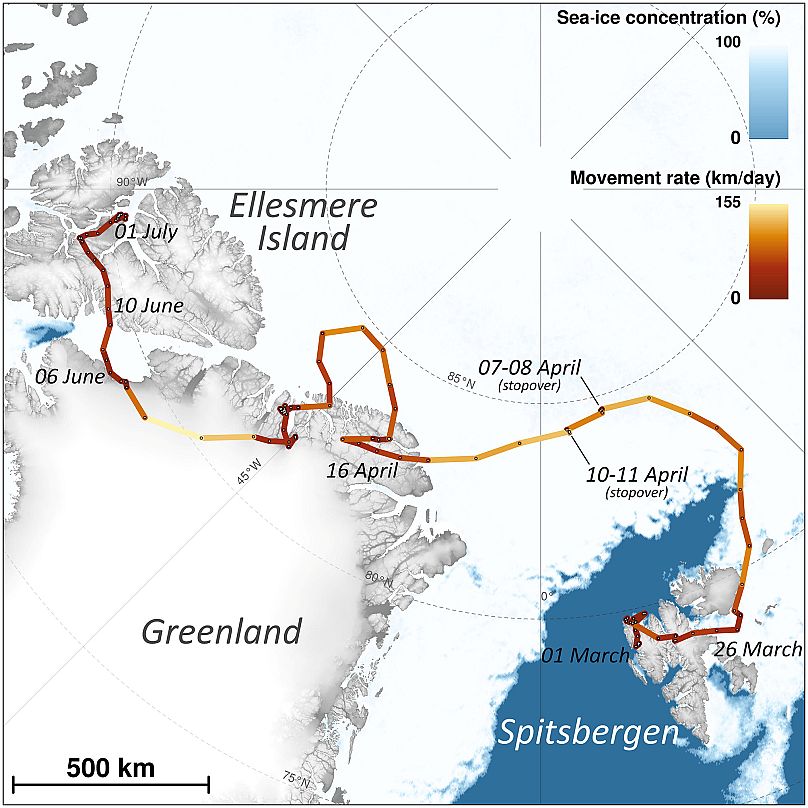A young Arctic fox took just 76 days to make a transcontinental journey of 3,506 km across sea ice from Norway to northern Canada. The creature's journey has left the global scientific community stunned.
A young Arctic fox took just 76 days to make a transcontinental journey of 3,506 km across sea ice from Norway to northern Canada. The creature's journey has left the global scientific community stunned.
Researchers at the Norwegian Polar Institute tracked the fox's journey after they fitted the animal with a tracking device. The astonishing results were published in the journal Polar Research.
The fox, also known as the coastal or blue fox, started her adventure on March 26, 2018, from the Norwegian Svalbard islands. The animal spent the first 21 days traversing a distance of 1,512 km to arrive in Greenland before continuing on to Ellesmere Island in Nunavut, which she reached two and a half months later.
"The Arctic fox settled on Ellesmere Island in a food web with lemmings, thereby switching ecosystems. Our observation supports evidence of gene flow across Arctic regions, including those seasonally bridged by sea ice, found in studies of the circumpolar genetic structure of Arctic fox populations," the paper said.
Researchers believe that this is among the longest dispersal events ever recorded for an Arctic fox. It is also the fastest movement rate recorded for this species.
"Crossing extensive stretches of sea ice and glaciers, the female moved at an average rate of 46.3 kilometres per day," the paper said. At one point, the fox covered a whopping 155km in a day.
While sea ice helped the fox move from destination to destination, it is increasingly threatened on the Svalbard archipelago due to climate change. The study suggested that she possibly moved in search of a new habitat due to a lack of resources.
The tracking device stopped transmitting in February this year, and the fox's current whereabouts is not known.












